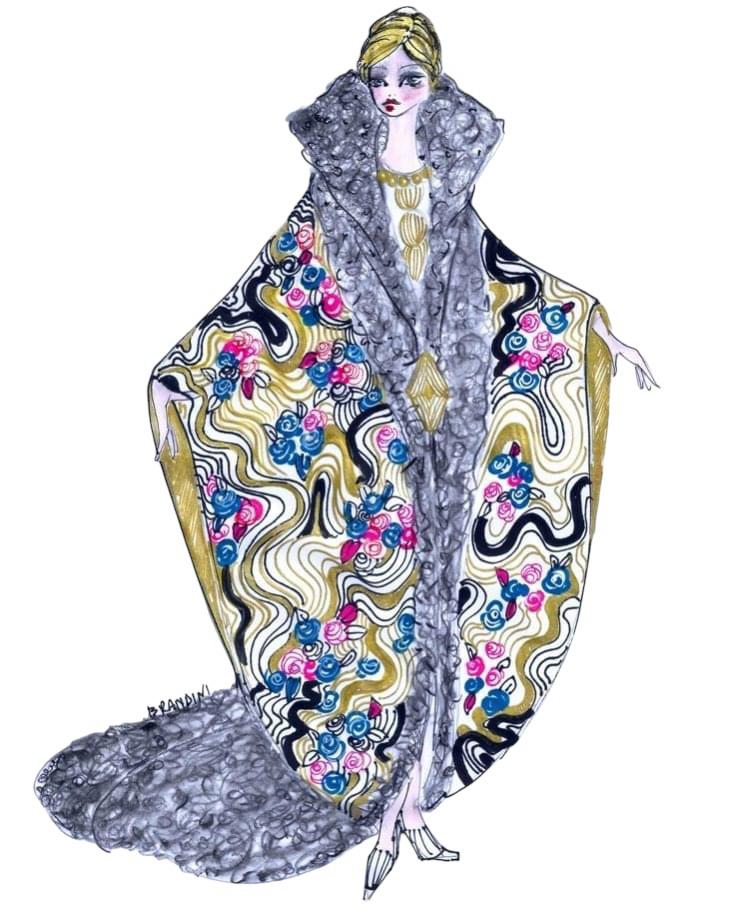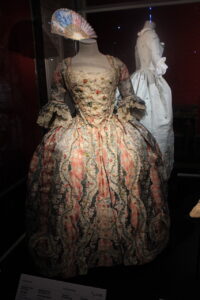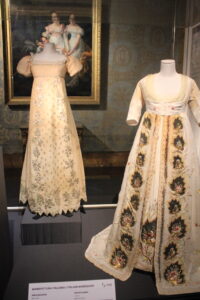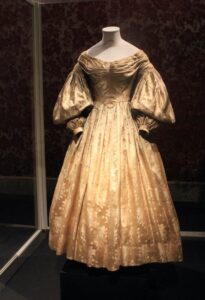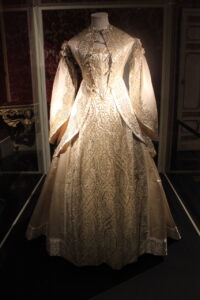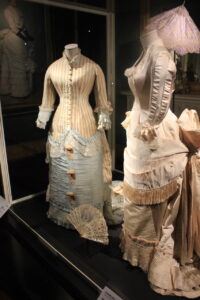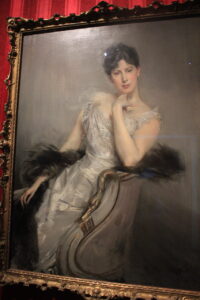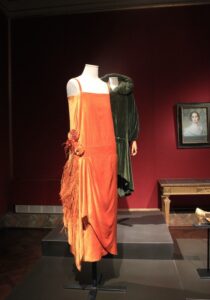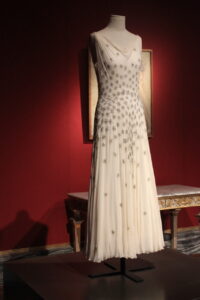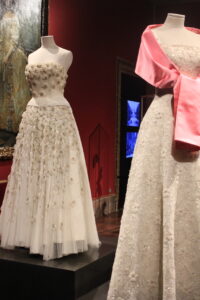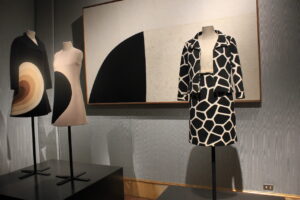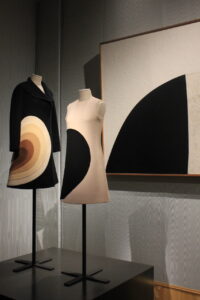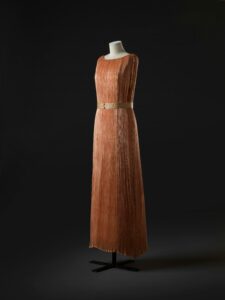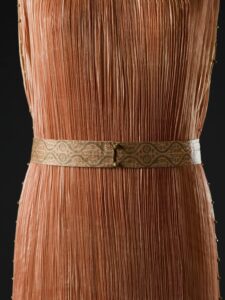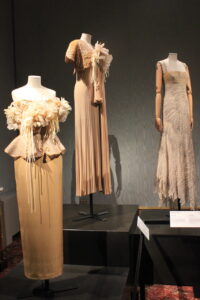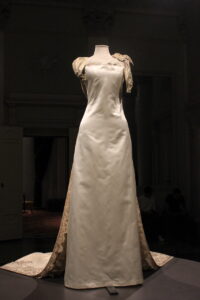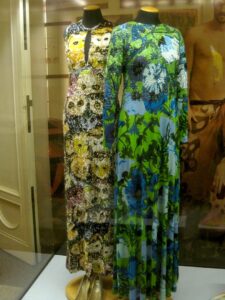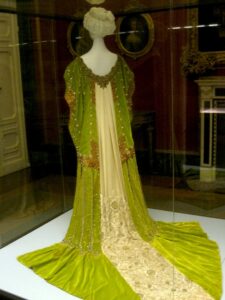Homage to Poiret by Beatrice Brandini
Silk chiffon dress by Raphael Goudstikker, ca. 1913
After four years of renovation, the wonderful spaces of the Palazzina della Meridiana have reopened to the public with the collections of the Museum of Fashion and Costume.
Sicilian manufacture dress, ca. 1775 – 80
Neoclassical women’s dresses ca. 1800
Inaugurated in 1983 as the first Italian state museum dedicated to the history of fashion and haute couture, the Costume Museum of Palazzo Pitti boasts a collection of more than 15,000 pieces that will be exhibited over time according to a rotation linked to themes. Together with historical clothes, a wide range of accessories, such as shoes, hats, but also fans and bags, complete a proposal that bears witness to the evolution of taste in costume.
Wedding dress, Italian manufacture 1836
Three-piece wedding dress, English manufacture, ca
On the left, a striped wedding dress, Italian manufacture, 1876. On the right, a dress by Charles Frederick Worth, ca. 1884.
The Palazzina della Meridiana is located in the southern wing of Palazzo Pitti and is a building begun under Pietro Leopoldo di Lorena in 1776. Its name is a tribute to the astronomical instrument created by Vincenzo Viviani in 1699, located in the vestibule of the then apartment of the Grand Prince Ferdinando de’ Medici. Many dynasties have succeeded one another, from the Lorena to the Savoy, passing through the Bourbons, and all have left their mark on the furnishings and mural paintings.
Giovanni Boldini “The Lady in White”, 1902
Velvet dress, Turin manufacture, ca. 1923
Dress by Madeleine Vionnet, 1931 – 32
Very interesting, in the new layout, is the combination of art and fashion desired by the Director Simone Verde and the museum curator Vanessa Gavioli; in fact, next to the historic and wonderful clothes, there are paintings from the eighteenth and nineteenth centuries, such as those by Carle Vanloo, Tito Conti, Giovanni Boldini or Vittorio Corcos, but also masterpieces of the Italian avant-garde by artists of the calibre of Burri, Campigli, Turcato.
On the left evening dress Sartoria Marianna – Florence, 1952. On the right (with stole) dress Maison Carosa, 1953
Dress and overcoat by Federico Forquet, 1968, on the right suit by Valentino, 1966
Dress and overcoat by Federico Forquet, 1968. On the wall the work Bianco e nero by Alberto Burri
Those who know me and follow me, know that I have always believed that fashion and art are the happy union of two artistic disciplines, which not only merge and draw inspiration from each other, but both photograph the time in which they live like any other important historical source.
But in this new installation we are not only talking about Fashion and Art, but also about Theater and Sculpture. As in the wonderful example of the dress by Mariano Fortuny worn by Eleonora Duse.
Delphos Tunic by Mariano Fortuny, 1911
In the foreground dresses by Gianfranco Ferré, 1989; on the right dress by Roberto Cavalli
The only regret is that many of the dresses belonging to this extraordinary collection are not usable within the same visit. I understand the reasons for conservation and maintenance, but, as often happens in Italy, and in particular in Florence, our immense artistic heritage does not always manage to see the light of day.
Court cloak by Charles Frederick Worth, 1902, ca.
In the past I traveled a lot for work and whenever I had the chance I visited a museum or an exhibition. I understood that abroad, despite an artistic heritage that is decidedly inferior to ours, they manage to build museums, exhibitions, events, attracting visitors (and revenue) very easily. It’s a shame that in Italy we still struggle to find adequate spaces, to enhance the collections, to safeguard a heritage that we sometimes negligently neglect.
Other dresses in the costume gallery
Other dresses in the Costume gallery
Other dresses in the Costume gallery
Good life to everyone!
Beatrice


